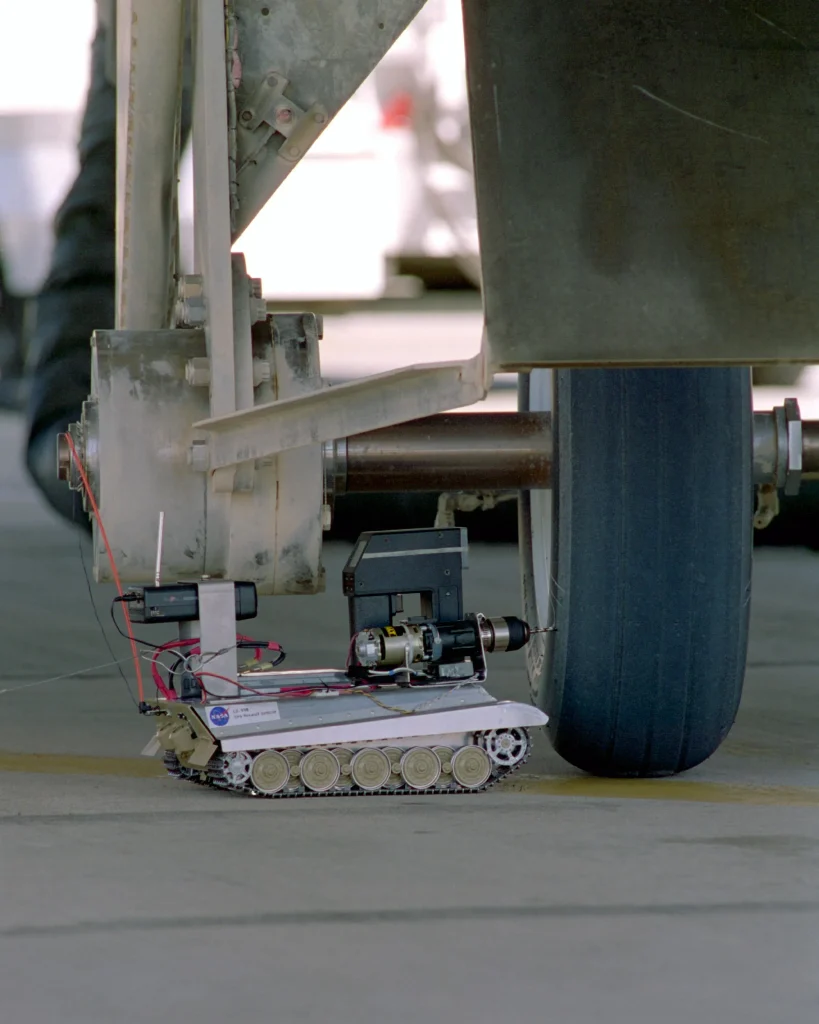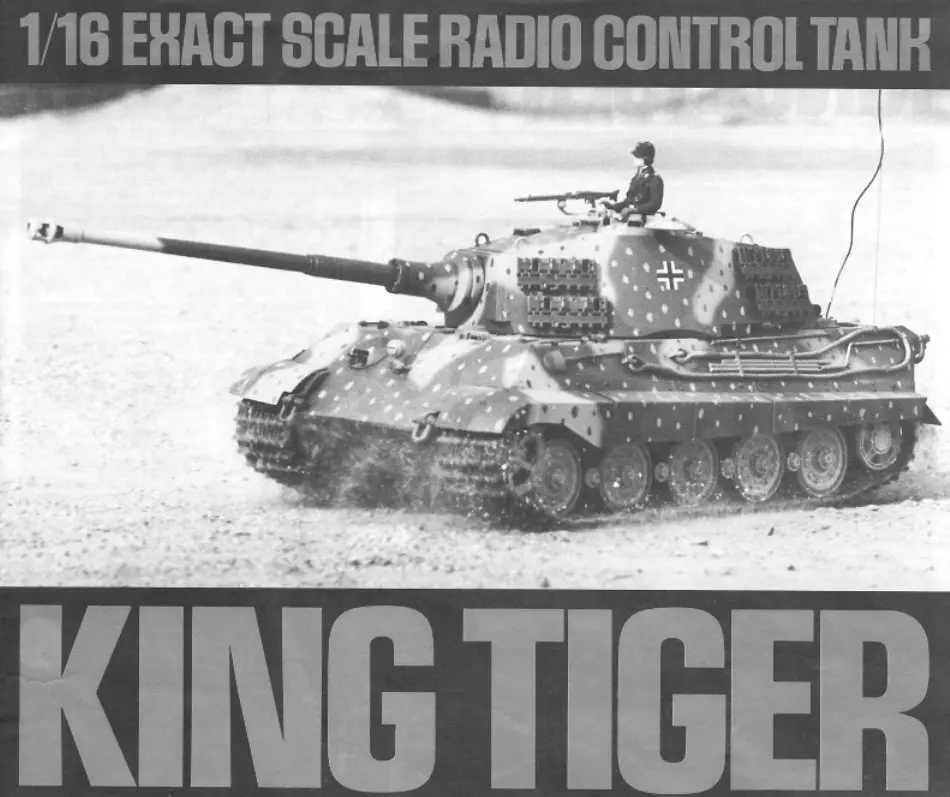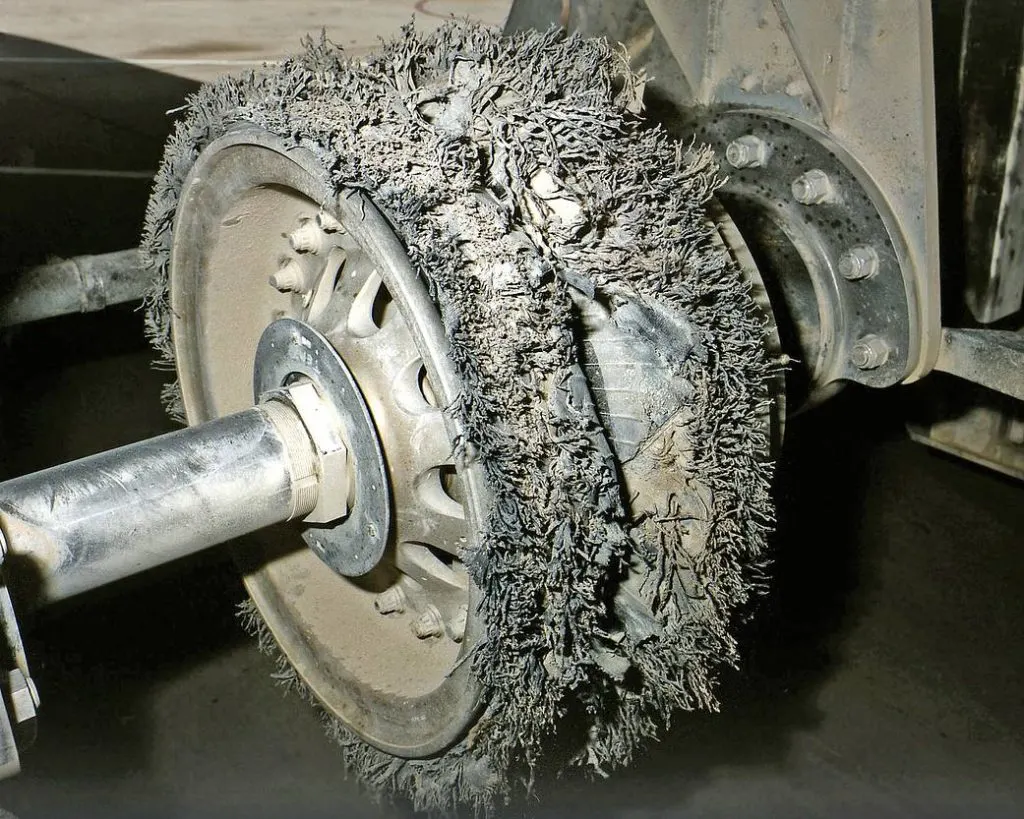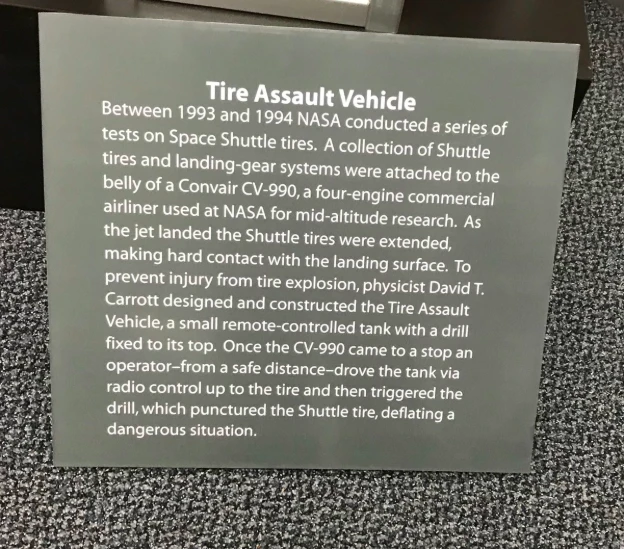The Tire Assault Vehicle (NASA TAV) was a miniature remote-controlled vehicle built from a scale model kit of the German Tiger II heavy tank from World War II that NASA used to test the Space Shuttle’s tires. Yes, this is an actual thing.
When German engineers were creating the Tiger II in the early 1940s, they probably had no idea that a small remote control replica of their tank would be used to assist in developing a spacecraft for the USA nearly 50 years later.

How and why was NASA TAV made?
The NASA TAV was constructed from a Tamiya 1/16th scale model of the German World War II tank Tiger II, which was extensively modified into a radio-controlled, video-equipped machine capable of drilling holes in aircraft test tires that were in imminent danger of exploding due to high air pressure, high temperatures, or cord wear.

An exploding test tire produces energy equivalent to two and one-half sticks of dynamite and can cause severe damage to anyone within 50 feet of the explosion, as well as ear injury — perhaps permanent hearing loss — to anyone within 100 feet.
The tires were built with a bias-ply structure, which can take higher loads and has superior puncture resistance than the radial-ply tires we use in our cars. They were inflated with nitrogen and pressurized to 300 psi (21 bar) or 360 psi (25 bar), depending on the tire.

It was critical to know what extreme conditions the shuttle tires could withstand upon landing without endangering the shuttle and its crew, thus these tires had to be rigorously tested before being used on a real shuttle.
NASA used a dated medium-altitude atmospheric testing aircraft, a modified Convair 990 Coronado narrow-body airliner bearing the tail number NASA 810. NASA 810 was converted into a landing systems research aircraft (LSRA). Its mission was to evaluate the brakes, landing gear systems, nose wheel steering control, and overall tire durability of the Space Shuttle.
Testing of the Shuttle tires with the Convair 990 LSRA began in April 1993 at NASA’s Dryden Flight Research Center at Edwards Air Force Base in California. The CV-990 LSRA, flown by test pilot and astronaut Charles Gordon Fullerton, performed 155 missions before the program ended in August 1995.

It was outfitted with an extra landing gear strut between the main gear to hold a Space Shuttle wheel for testing. That landing gear strut would be extended during landings to monitor the systems’ performance.
These experiments also sought to determine the failure point of these tires. In true NASA form, they want to know not only how effectively their systems work, but also when and how they will fail. During failure testing, some tires would be worn so thin that just one or two plies remained to hold the pressure.
These unpredictable bombs could blow at any moment and were too unsafe for staff to approach. Edwards Air Force Base had access to a bomb disposal robot, but it was too big to go beneath the CV-990 and, at $100,000 (in the 1990s), was way too expensive to lose to a blown tire.
So NASA hired physicist Dr. David Carrot to develop a significantly cheaper remote technique of approaching, inspecting, and drilling into worn Space Shuttle tires. David had built a fantastic tiny machine 18 inches (46 cm) long, 8 inches (20 cm) wide, and 12 inches (30 cm) tall, weighing only 20 pounds (9 kg). Perhaps most crucially, NASA TAV cost was less than $3,000.
The Tire Assault Vehicle, or NASA TAV was used to drill into the tires to damage them, which was too dangerous to do manually due to the severity of an aircraft tire explosion.

Only around a quarter of the original model kit pieces survived in the finished NASA TAV, with the majority of the vehicle constructed from third-party hardware and custom-made metal parts. NASA TAV served on 32 missions and survived its time as a test vehicle; as of 2017, it was on exhibit at the Air Force Flight Test Museum at Edwards Air Force Base.


